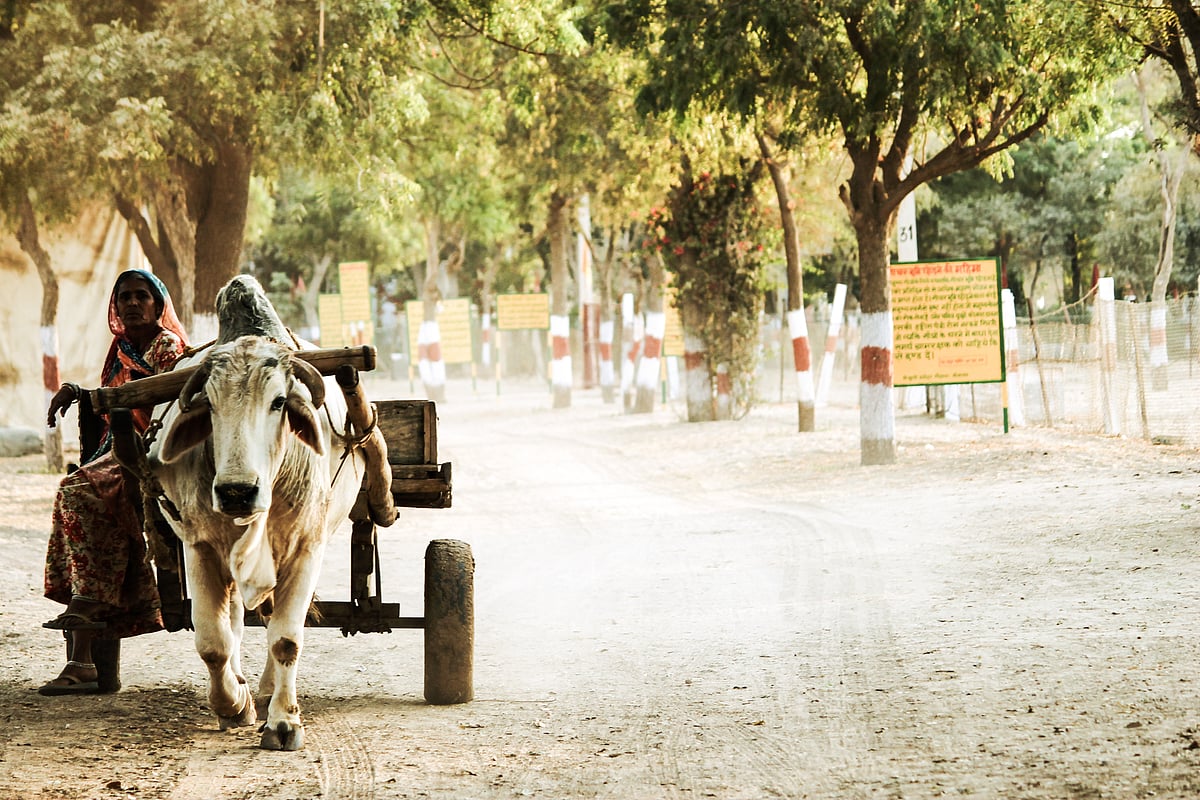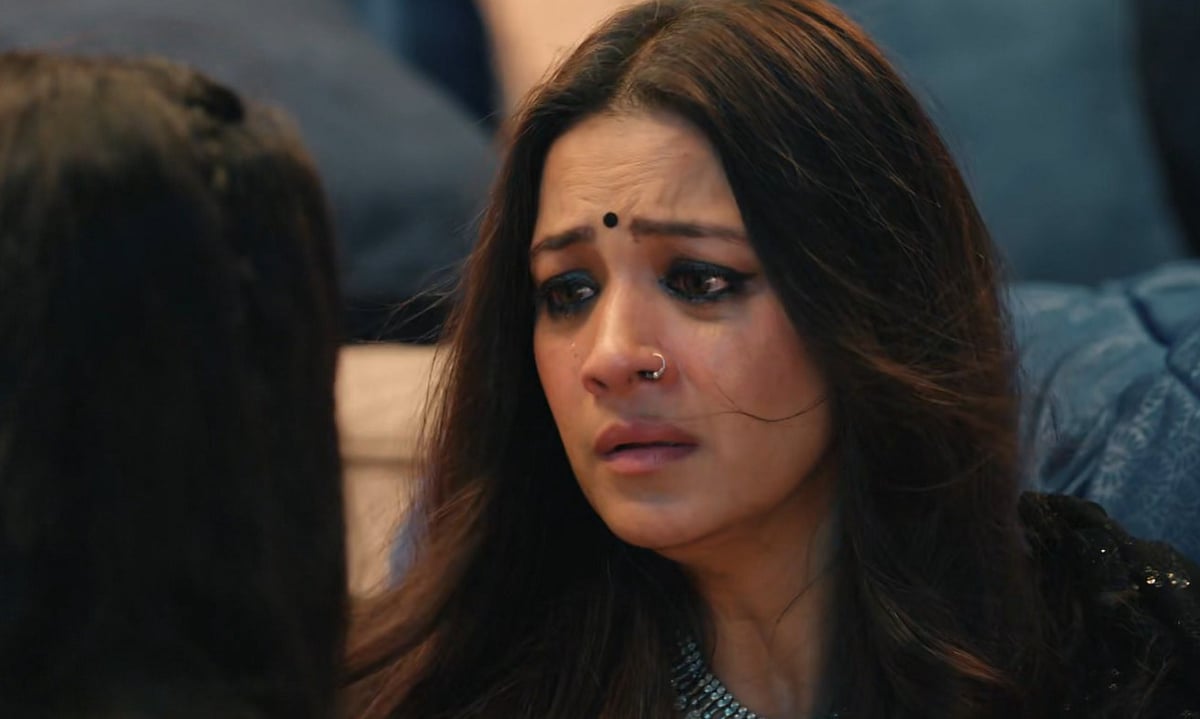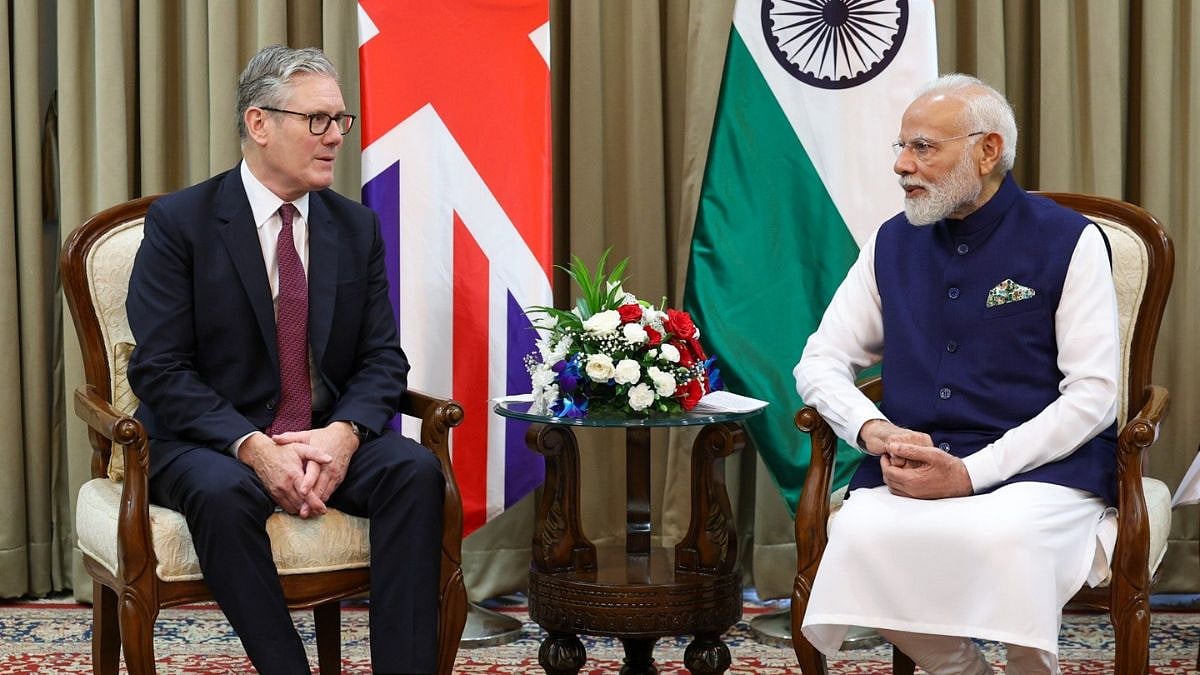Farmer Producer Organisations (FPOs) was first introduced in the year 2011-2012. The process of implementation of this initiative has been slow and steady, mainly because this model is based on the trust factor (building one takes time). While trust factor is the key in its formation, factors like governance, skill set along with trust are vital for FPOs to function smoothly.
But can FPOs alone address the distress among farmers? This was discussed during a webinar ‘Rural distress, the government doles and Agri finance’ which was organised by SIES and Free Press Journal in association with NSE, NCDEX Investor (Client) Protection Fund Trust, and East-West Seed.
The panellists for the session were (in alphabetical order) Kavita Jha, AVP, NCDEX; Suhas Joshi, Head-Sustainability and Business Stewardship, Bayer South Asia; Arun Raste, Executive Director, NDDB; and P V S Suryakumar, Deputy Managing Director, NABARD. The session was moderated by RN Bhaskar, Consulting Editor, Free Press Journal; and the welcome address was delivered by Dr Vaneeta Raney, head, BMM at SIES College.
Compiled with editorial support by Jescilia K
Given below edited excerpts:
Rural distress: What it means for India
Kavita Jha, AVP, NCDEX: Agriculture has been at the forefront in the Indian government’s agenda. The government is on the mission to double the farmers’ income. The intent of the government is right but the way policies are executed need to be tweaked.
Agriculture contributes 14 per cent to our GDP. The sector employs half of India’s working population which in itself is a sign of distress.
It has to be noted that compared to the rest of the world, the contribution of agriculture to the Indian GDP is double. The global average is 6.4 per cent.
Today, agriculture is repositioned as one of the sectors that will lead to growth in the economy. During the COVID-19 times, there have been a lot of changes and ordinances (scrapping of the Essential Commodities Act, APMCs) that have come into place. However, it remains to be seen how these are executed. These steps are in the right direction.
Suhas Joshi, Head-Sustainability and Business Stewardship, Bayer South Asia: Around 3,00,000 farmers have committed suicide in the last one-two decades. The country mobilised its complete machinery to curtail COVID-19 crisis, at a time when the casualty numbers were just a few hundred. If the government had put the same effort to address farmers’ distress, the situation would have been different today.
A crisis like farm distress does not develop overnight. There are two reasons for the crisis getting out of hand— lack of timely intervention and not realising the severity of the issue. This made it difficult to reverse or cure the situation. So, superficial measures like farmer loan waiver will not help.
P V S Suryakumar, Deputy Managing Director, NABARD: India has the highest gross cropped area — 195 million hectares. We have grown in production from less than 50 million tonnes in the 1960s to 295 million tonnes (today). Now, we are going to touch 300 million tonnes. This is a remarkable development since our Independence (1947). A programme like Garib Kalyan Yojana was possible because there is a huge stock of grains in the country. We have achieved a lot. But there are no doubt pain points — malnutrition in the system, food wastage, issue of marketing among others.
Factors like low productivity, issue of marketing, the rise in prices of agricultural input among others leads to farmer distress. Farmers are hurt as price realisation of the produce is not in line with the input costs.
Arun Raste, Executive Director, NDDB: As per the census of 1951 and 2011, the population in the rural areas tripled from 29.81 crore (in 1957) to 83 crore (in 2011). However, the share of people in rural India went down from 82 per cent to 69 per cent. In absolute terms, the number of people in rural areas increased but in percentage terms, the cities bore the brunt.
As per the socio-economic survey of 2015, only 30 per cent of the rural households are dependent on cultivation and 51 per cent are dependent on casual or manual labour. It is a myth if you say the rural economy is based on agriculture. About 31 per cent (poorest of poorest) who earn less than Rs 5,000 a month are from this (casual labour ) segment. While the contribution of agriculture to GDP is 16 per cent, it employs 44 per cent of the rural households. This is very skewed and increases poverty.
As per the data of 2015-2016, the total operational land holdings is 146 million hectares and the operational area under cultivation is about 158 million hectares. The small and marginal farmers which constitute 86 per cent of farmers own only 47 per cent of this land. This shows a skewed ratio.
As per the National sample survey of 2003, 40 per cent farmers want to leave farming and get into another form of activity. In 2014, there was a repeat survey and the situation has worsened. The younger generations of the farming community want to enter other professions (as they feel agriculture is not a feasible profession). If this persists for the next 20 years, there will be no farmer left and there will be no grain in the country. Unless of course, people from urban India migrate to villages.
In terms of non-farming rural areas, 30 per cent of the farmers that are moving out of farming are getting into construction because they are unskilled. This population is out of the social security bracket. There is no skill mapping or training for people who are shifting from agriculture to other sectors.
The old mandi system was killing the farmer. Due to the urgency to encash (to pay to lenders and others) and the perishable nature of the crop, the farmer ends up opting for distress sale. This leads him to incur losses. The relation between the state and the centre is creating the problem for farmers.
Dole or Necessity
Kavita Jha: This is very much a dole system in the country. I would also typecast minimum support price (MSP) as a dole or arrangement the government made. By increasing the MSP every year, we are making the market inefficient. The government is only able to buy 30-40 per cent of the overall produce. The farmers have to look for other options to sell the remaining produce.
P V S Suryakumar: The farmers do not get dole. It is called an aggregate measure of support or a producer support estimate. It is the way of calculating what a producer gets. As per 2015-2016, Indian farmers paid (-) 7 per cent to the system. The model that we follow is the one where farmers always paid and consumers always gained. It has changed recently — when our Prime Minister focussed on doubling farmers' income.
Industry status to farming or Contract farming
Suhas Joshi: Industrial status to farming is a good concept, but politically it will be a hot potato. Here I am talking about 50 per cent of the population involved in non-remunerative agriculture — many of them holding less than one or two hectares of land.
If you talk about industry status for agriculture, then it means some claim on the land. It means it has to be transferred — formally or informally, temporarily or on a long-term basis — to the corporate or industry that is managing this activity. In this political situation, it is going to be very difficult to manage this transition at least for the next 10-15 years.
P V S Suryakumar: The ordinance that came into force recently makes contract farming more doable than what it was earlier. Contract farming did not work in the past as one party was cheating the other, and other reasons. Thus, the government put a caveat for some activities. Contract farming cannot be limited to a particular type of crop.
Private sector thrives when farmers make money and farmers make money when the private sector makes money. Without the private sector improving efficiency, farmers cannot make money. If this mantra is used, contract farming will work big time.
Suhas Joshi: Bayer runs contract farming with 5 lakh farmers every year. We deal in (patented) proprietary commodities. In this case, a farmer is not allowed to sell outside the contract. When these farmers cannot get a price arbitrage (because the crop output is proprietary) then this type of contract farming is easy to run and implement. Thus, you are not depending on paper but market forces.
In the case of contract farming, it looks perfect on paper. But the laws are not enforceable when it comes to farmers. Despite having a contract, trying to enforce it on the farmers is almost impossible. At times, farmers sell outside the contract and the companies end up with losses.
P V S Suryakumar: At times it works when every aspect of the ecosystem is looked at. It is about the way one is looking at contract farming.
Can FPOs bring about change in agriculture
Suhas Joshi: An FPO fails because there is a lack of skill, lack of value addition and governance issues.
P V S Suryakumar: FPO is a new kid on the block. It needs time and effort to grow. It depends on many factors to grow — primarily trust. It takes a while for a new intervention to work. So, it is too soon to write off FPOs. So, NABARD feels FPOs should be given some more time.
One needs to understand that it is not very easy for farmers in a system like ours, to come and join an FPO.
The working of FPOs depends on how coherent the group is. The group of FPOs that are above political party afflictions, caste politics and other things, then most of them are successful. It is not just about making profits but making better margins.
Arun Raste: Farmers do not have the wherewithal to stand up against anybody (who is exploiting them). We need an aggregator who can take a risk for these farmers or give them working capital (till the time these aggregators can hold the produce on behalf of the farmers in the warehouse and sell it at a later date at a fair price). We can democratise the role of middlemen through an FPO. If you can fund an FPO and make him do the job of a middlemen/ aggregator (that is holding the produce until you get a fair price), it will be helpful.
An aggregator should come with a risk-bearing capacity. Unless we do not build that, FPOs will not be able to survive.
Kavita Jha: Contract farming will be a slow process in taking the whole sector to the next level. But if an FPO follows a corporate model, things will take off. Stronger FPOs have the potential to take the sector to the next level.
If contract farming or industry status is done through an FPO, things will be much smoother compared to getting into an agreement with individual farmers.
From the NCDEX’s perspective, we have a separate set-up for FPOs. We started this project about two years ago. On the exchange itself, we brought about changes like margin waivers for all FPOs ready to park their produce with us; ready to deliver their produce; and others. Apart from this, we are educating farmers to use financial products to safeguard themselves from price risk.
The government should intervene and look at options as an effective tool to help farmers and to lock in prices. This will help them to take care of the price risk with a fixed price.
Farm credit
P V S Suryakumar: Farm credit is a subset of Indian agriculture. Indian agriculture can be divided into multiple phases. The first phase is from 1947 to the mid-1960s — before the green revolution took place. At that point of time, there was a severe shortage of food — we undertook land reforms; for the first time cooperative credit institutions were used to provide credit; and there was an emphasis on irrigation.
In 1960, the green revolution took place which goes up to the 1990s. We moved from shortage to surplus.
The next phase commenced from 1995 to 2015. In addition to agriculture, we looked at allied activities like milk, fish, fruits and others. Today, India is the topmost producer of milk and fruits. At the same time, we joined the World Trade Organisation (WTO) and opened up our market. This led to a huge change.
Before the third phase ended, we also created a National Agriculture Policy where we desired that we want to grow at 4 per cent consistently. Sometimes we did well, sometimes we did not. There were instances when some states agriculture grew by 10-11 per cent. As a country, we cannot grow beyond 4 per cent in agriculture.
We are in the fourth phase now — doubling farmers’ income is a stupendous task. This is only possible when the cost comes down, marketing improves, productivity improves among other things. Doubling farmers' income is only possible if pieces of the jigsaw puzzle fall into place. We need regional models that work to double farmers’ income.
Agriculture credit has been growing pretty well. Last year, we provided Rs 13.5 lakh crore of credit. Agriculture credit has been meeting the targets.
Arun Raste: According to the NSSO survey, the institutional farm credit went down from 69 per cent in 1991 to 56 per cent in 2012. This has gone down because of the tenancy. Across India, there is a change that is taking place whereby the farmers are giving their land on tenancy rights to someone else to do farming. These are usually oral contracts. So, the tenant farmer, who was earlier a small farmer or landless labour, does not have any land in his name. So, he cannot avail of bank credit. He has to depend on non-institutional lenders for bank credit. He does not get crop insurance or any other government benefits.
Looking forward
Suhas Joshi: To reverse farm distress, there is a need to take systematic, integrated and comprehensive measures that will address this chronic situation. This is the only way to address it.
The recent announcement by the government which is very targeted towards fundamental issues like capital formation, asset creation, market restructuring among others will hopefully lead to something concrete.
Kavita Jha: There is a lot of impetus given to digitalisation in the agriculture ecosystem. This is one aspect that needs to be looked at. The other aspect that needs to be looked at is demand creation. The farmers are suffering on both fronts — when farm output drops and also when it increases. There is a need to work on the supply and demand side.
Post-harvest arrangements need to be robust or revamped. The Rs 1 lakh crore budget allocated to agriculture infrastructure is largely focussed on post harvest, digitalisation, and making the supply chain more effective. There is a need to equip farmers on the digital front. All these policies are in the right direction but we have to see how everything pans out.
The government is the largest buyer for agriculture commodities. We are educating the government (instead of increasing MSPs) to come to our platform and hedge.
Arun Raste: In the case of tenancy issue, some steps need to be taken and they are:
Assess the number of tenant farmers in the country. This will be relatively huge.
Institutionalising the effect: First is the tenancy contract and then is farmer contract.
FPO is a very good notion. We run some of the biggest FPOs (NDDB subsidiaries are connected to them). It is different in the case of cash crops when you get paid everyday or in regular intervals, and the product is homogeneous and the market is defined. This is not possible in non-cash crops.
I don’t know if contract farming and FPOs will go hand-in-hand going forward. The question is will big corporates or private players step in to ensure that contract farming will be successful. At present, it is a pipe dream about FPO and contract farming. In the future, FPO might succeed (at present it is not doing that good).










